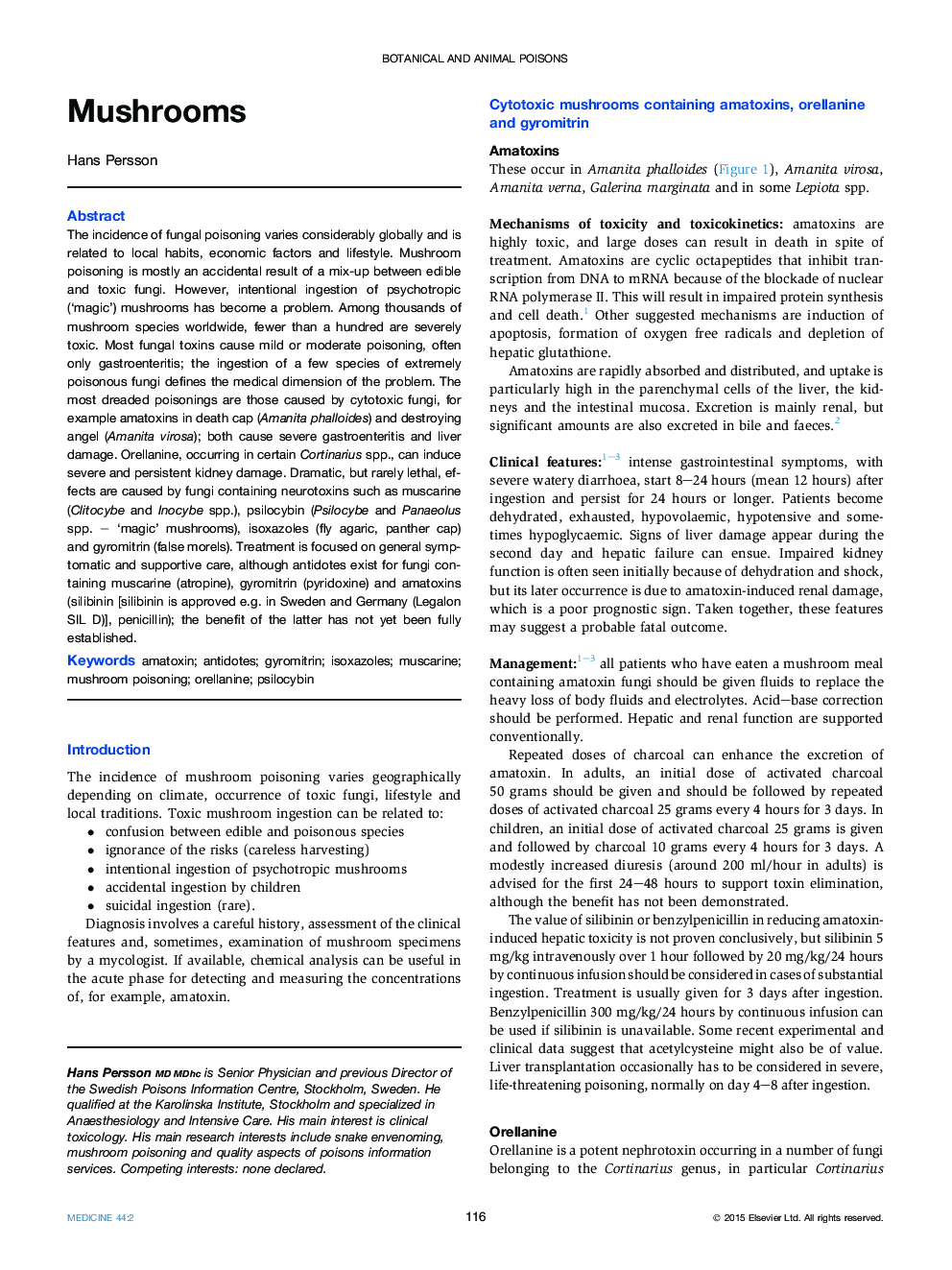| کد مقاله | کد نشریه | سال انتشار | مقاله انگلیسی | نسخه تمام متن |
|---|---|---|---|---|
| 3804572 | 1245079 | 2016 | 4 صفحه PDF | دانلود رایگان |
The incidence of fungal poisoning varies considerably globally and is related to local habits, economic factors and lifestyle. Mushroom poisoning is mostly an accidental result of a mix-up between edible and toxic fungi. However, intentional ingestion of psychotropic (‘magic’) mushrooms has become a problem. Among thousands of mushroom species worldwide, fewer than a hundred are severely toxic. Most fungal toxins cause mild or moderate poisoning, often only gastroenteritis; the ingestion of a few species of extremely poisonous fungi defines the medical dimension of the problem. The most dreaded poisonings are those caused by cytotoxic fungi, for example amatoxins in death cap (Amanita phalloides) and destroying angel (Amanita virosa); both cause severe gastroenteritis and liver damage. Orellanine, occurring in certain Cortinarius spp., can induce severe and persistent kidney damage. Dramatic, but rarely lethal, effects are caused by fungi containing neurotoxins such as muscarine (Clitocybe and Inocybe spp.), psilocybin (Psilocybe and Panaeolus spp. – ‘magic’ mushrooms), isoxazoles (fly agaric, panther cap) and gyromitrin (false morels). Treatment is focused on general symptomatic and supportive care, although antidotes exist for fungi containing muscarine (atropine), gyromitrin (pyridoxine) and amatoxins (silibinin [silibinin is approved e.g. in Sweden and Germany (Legalon SIL D)], penicillin); the benefit of the latter has not yet been fully established.
Journal: Medicine - Volume 44, Issue 2, February 2016, Pages 116–119
